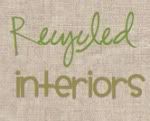Doing some of the work yourself has its perks (total control, lower cost, learning experience), but it also comes with its problems. The largest of which is when you deal with an untrustworthy contractor. Case in point: We planned to tile the bathroom ourselves, shower included, but we hired a contractor to rough out the space with plumbing and electrical so that I could just take over and start my work. I have only ever tiled floors and backsplashes before, so I was a little new to the shower scene......which is precisely why I asked that the contractor get it all set for me to tile.
He did (or so I thought), and after a few months of work, mostly during nap times, I was finally at this point in the project:
It felt like the home stretch, all I had left was the soffit and shelf. I was feeling good, even proud of myself (which for a type A personality is not easy to do)......until an inspector came to check it out. He noticed that we were missing the proper water-resistant wall board in the shower as well as the proper sealant in each corner/crack. I cried. A lot. I'm glad we found out before I grouted and finished it all up, but it still stung. I am not a confrontational person...usually.....but let's just say the aforementioned contractor is not allowed anywhere near my house....EVER. He claims that he didn't know that I was doing the tiling (although he has helped us with projects before and knows that I tile, plus I specifically asked him for some tips on shower tiling). Bottom line: he is a liar and can't be trusted. I just wish I had known before I got this far.
Needless to say, we had to fix the problem. If we left it as is, we would have had water and mold problems down the road. Maybe not even so far down the road either. We didn't work this hard and this long to have it all compromised because of one bad shower. So, we ripped it all out. To the studs. I cried again. We attempted to take down each tile individually, but they were stuck on there pretty good, and it would have compromised the integrity of the already-sub-standard wall board behind them if we continued. We were told that we could just seal the cracks and corners and we might not have a problem, but it's just a risk we weren't willing to take. We wanted it done right. And although I was proud of my work, and could have re-tiled the whole thing myself, I wasn't mentally prepared to start the project again, nor did I want to wait another few months to find the time to do it. So we called someone in. Normally, the hardest part is admitting you have a problem, right? Well, for me, it's asking for help. But I did.
It cost about $1500 to finish it up. This included labor, roughing out the new space with the RIGHT type of water-resistant wall-board, sealing it all with Hydra-Ban (a special green-goopy sealant to keep out moisture as a secondary measure), and buying all new tiles (although we were able to save the mosaics). I'm not used to paying for labor, but just knowing that it was done right made me feel better writing a check to this contractor (whom we trust now and will be using for a to-be-discussed project in January).
So, the shower is done, as you can see, and everything is hooked up in the bathroom. Finally isn't even the word to describe it. I'm not sure what is. Just an audible "Aaaaah!" The refreshing one, not the scream one (although I've done that plenty of times during this process). Now I just have to work my magic and get the space decorated and feeling like home.
And because I'm a sucker for before and afters, here's a little peek at the transformation over the last year+.
These first few shots are what it looked like when we first started the project. Cold, dark and a little creepy!
Then we started putting up some walls and getting plumbing and electrical roughed in: The big hole in the ground below is to connect the shower, toilet and vanity to the pump. You can see the pump itself in the second two shots.
And here is the shower after it was "prepared" for me to tile. You can see that he used regular Durock Cement Board. This isn't the absolute worst thing you can use in a bathroom generally, but it's definitely not meant for a shower stall. I should have done my research first rather than relying on/trusting someone else to take the reins. He also poured a cement floor with a slight pitch toward the center (which was also not the right grade....which we found out later). Also, you can see some of the nails in the cement board. Those are supposed to be filled and the corners and edges sealed and caulked. You live and learn, I suppose.
And here are some shots after my handy-work. I used 1/8 spacers between my tiles, which I later learned is unnecessary and probably not the best idea either. If you are using subway tiles in the shower, they are designed to stack on top of each other and leave a small gap. The added space given by the 1/8 spacer just adds more room for moisture to potentially get trapped over the long term. Lesson 490 of this project: Best to stack!
And then the final product...after much time and pain and stress:
Done. And done.
I'll show you the rest of the bathroom next time, along with a sneak peek at the rest of the basement progress. YAY!


.jpg)
.jpg)































